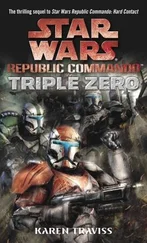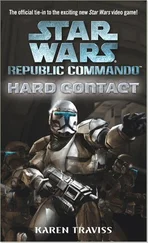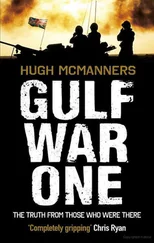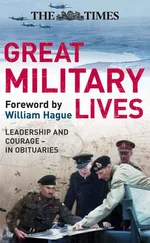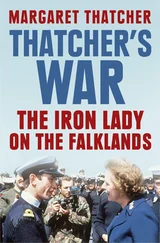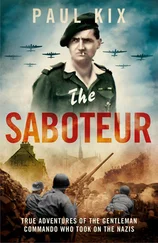Hugh McManners - Falklands Commando
Здесь есть возможность читать онлайн «Hugh McManners - Falklands Commando» весь текст электронной книги совершенно бесплатно (целиком полную версию без сокращений). В некоторых случаях можно слушать аудио, скачать через торрент в формате fb2 и присутствует краткое содержание. Город: London, Год выпуска: 2014, ISBN: 2014, Издательство: Nightstrike Publishing, Жанр: nonf_military, Биографии и Мемуары, на английском языке. Описание произведения, (предисловие) а так же отзывы посетителей доступны на портале библиотеки ЛибКат.
- Название:Falklands Commando
- Автор:
- Издательство:Nightstrike Publishing
- Жанр:
- Год:2014
- Город:London
- ISBN:978-0-992-81540-0
- Рейтинг книги:4 / 5. Голосов: 1
-
Избранное:Добавить в избранное
- Отзывы:
-
Ваша оценка:
- 80
- 1
- 2
- 3
- 4
- 5
Falklands Commando: краткое содержание, описание и аннотация
Предлагаем к чтению аннотацию, описание, краткое содержание или предисловие (зависит от того, что написал сам автор книги «Falklands Commando»). Если вы не нашли необходимую информацию о книге — напишите в комментариях, мы постараемся отыскать её.
Falklands Commando — читать онлайн бесплатно полную книгу (весь текст) целиком
Ниже представлен текст книги, разбитый по страницам. Система сохранения места последней прочитанной страницы, позволяет с удобством читать онлайн бесплатно книгу «Falklands Commando», без необходимости каждый раз заново искать на чём Вы остановились. Поставьте закладку, и сможете в любой момент перейти на страницу, на которой закончили чтение.
Интервал:
Закладка:
We were each of us planners, logisticians – even brigade commanders, but of course what was really being planned was way above our heads and beyond our ken. It was a tense period of waiting and we talked about everything imaginable. But a worm’s eye view is all that any individual has of any war – except for the senior commander, who has his own very specific limitations of perception.
During this these final preparations, we talked endlessly about strategy.
When attacking an enemy position you need a superiority of at least three to one. The arithmetic ratios increase if your enemy has well-prepared defences, particularly if you have to assault from the sea. This is known as an ‘opposed landing’, and because of the probability of suffering high casualties while leaving the ship and before becoming established on the shore, requires very much more than the usual three-to one-advantage. The textbooks suggest seven-to-one. If you don’t have such superiority, you have to use deception and brilliant planning to attack the enemy in small chunks, so as to increase their relative numbers, thus conforming to the ratio. They key to this is concentrating troops and fire power in the key places.
But for getting ashore in the Falklands, the Task Force had only sufficient helicopters and landing craft to assault with one battalion – flying in one company by helicopter and the remainder by sea using landing craft. Of course we could bring in further reinforcements after this first wave, but strictly by the application of military mathematics, we could only do an opposed landing against one enemy company at the most. Thus through our own basic deductions, it seemed we were not going to attempt a direct, full-frontal assault on Port Stanley – thank goodness.
We practised assault landings interminably (or so it seemed) at Ascension, which was to be invaluable for the partially opposed landing we were eventually to do at San Carlos. I discovered afterwards that the option of a full-frontal assault by sea and by a coup de main helicopter force was still being actively considered by the planners at that stage, but was moving down the list in terms of its probability.
HMS Antelope , the Type 21 gunship who’s Company had already been so hospitable, asked us to fire their gun, so we flew across to them for the day. The fire would be at smoke flares dropped by helicopter into the sea to the north of Ascension. I would adjust the shells onto the smoke flares from the rear of the aircraft, while Nick and the rest of the team worked with the ship’s navigator and PEWO (principal executive weapons officer), so that the ships operations room staff would understand what to do when we called on them to fire for real.
The first part of the morning was spent running through the computer and operation-rooms drills, and talking to the pilot and observer of the Lynx about the best way to do the job. I wanted to let them do as much of the firing as possible, thinking ahead to when it might be in my interests to have a helicopter crew who were confident and able enough to adjust gunfire on my behalf.
In the hazy, tropical sun-glare, the featureless ocean became like a greasy mirror, painful to the eyes. The firing practice went well, although the first few smoke flare targets failed to burn, and when they did ignite, were hard to see. The Lynx helicopter landed back on board and we stayed for dinner, being delivered back to Fearless by Gemini assault boat later that evening.
The huge re-stowing programme had started as soon as the Task Force arrived at Ascension. The choppy mid Atlantic swell bustled with ‘Mexe’ floats and landing craft, with streams of helicopters above. The logisticians worked round the clock to get everything reloaded in something like the reverse order in which they were likely to have to emerge when we landed.
In war nothing can be achieved without good logistics. 3 Commando Brigade was very fortunate to have the uniquely experienced Commando Logistic Regiment. With no firm operational plan, the loggies were giving the ‘ops’ planners as wide a set of options as possible by reloading to allow as ‘flexible’ an offload as possible.
The ‘reload’ had to be got as near correct as possible at Ascension Island, as once we sailed south, the rough seas would not allow anything but the most limited reshuffle of troops, and hardly any reallocation of the mountains of stores. Even the likely theatre of operations was uncertain – from the snow, ice and Antarctic mountains of South Georgia, to the wet moorland of the Falklands – totally different places in which to fight, requiring different stores and equipment.
To further complicate the restowage programme, the commando and parachute battalions needed to practise fly-offs and landing-craft assaults. These were conflicting requirements for the limited helicopter lift capacity, and clogged up the stores loading routes through the ships with troops waiting to be flow off. But nevertheless, if we were to do this for real, the complete routine of battle preparation had to be practised: assembly drills, the assault routes through the labyrinth of ships’ passages, hatchways and ladders to the landing-craft bays and flight decks, the calling-forward of the platoons and companies in the correct order for the assault plan, then getting them into the right boat or helicopter at the right time.
The rehearsals started in slow time by day without heavy equipment, working up to doing it at night carrying full combat loads – humping huge bergens through bolted-down hatches (to minimise flooding if the ship is hit). Both troops and the ships’ companies needed to be totally familiar with all this. Pilots and landing craft coxswains had to go through the routines until everybody could do it slickly, in the dark, in bad weather and heavy seas, and possibly against enemy opposition.
On 21 May, the actual landings at San Carlos ran late because of many unforeseen difficulties, for example, a paratrooper falling into one of the landing craft and breaking his pelvis. Without the practising at Ascension, these delays would have extended long into the next day, with the certainty that troop-carrying ships would have been hit by the Argentine air force.
For the proposed landings, I was to be in a helicopter, flying well ahead of the assaulting wave, directing naval gunfire and Harrier strikes onto enemy positions. We practised the sort of flying that would give the helicopter a chance of surviving, while allowing me to set the targets. This involved sickening turns and dives, while flying very low indeed.
FO1 got out and about as best we could, off Sir Percivale and on to the island to make further long marches in the blistering heat, to fire our weapons on a makeshift range and to scrounge the odd dinner on board Canberra . We were told to move across to Fearless , but couldn’t do this immediately as our equipment was still buried in the hold of Sir Percivale, and in the restowage programme could not be ‘excavated’ from the pile for several more days.
There were panics when we were told that Fearless was sailing south, including one when our source of misinformation thought that her normal water replenishment trip to sea (to get clean sea water for her desaliniser) was her actually sailing for the South Atlantic. On this occasion, FO1 was literally set adrift in our Gemini one mile off Ascension at night with no fuel.
But eventually we were able to get all our gear out of Sir Percivale’s vehicle deck and flown across to Fearless . We followed in our Gemini, taking leave of all the friends we’d made.
On Fearless , the large number of officers in the 3 Commando Brigade HQ had filled all the usual officers’ accommodation. So we were put into one of the Other Ranks mess-decks – ‘Four Mike One’ (4M1). Naturally, whenever there had to be a fire practice in a mess-deck, it was 4M1 into which the smoke-canisters were thrown, or the fire-hoses ‘accidentally’ let off. Officers, particularly if Army, are considered fair game by sailors.
Читать дальшеИнтервал:
Закладка:
Похожие книги на «Falklands Commando»
Представляем Вашему вниманию похожие книги на «Falklands Commando» списком для выбора. Мы отобрали схожую по названию и смыслу литературу в надежде предоставить читателям больше вариантов отыскать новые, интересные, ещё непрочитанные произведения.
Обсуждение, отзывы о книге «Falklands Commando» и просто собственные мнения читателей. Оставьте ваши комментарии, напишите, что Вы думаете о произведении, его смысле или главных героях. Укажите что конкретно понравилось, а что нет, и почему Вы так считаете.

